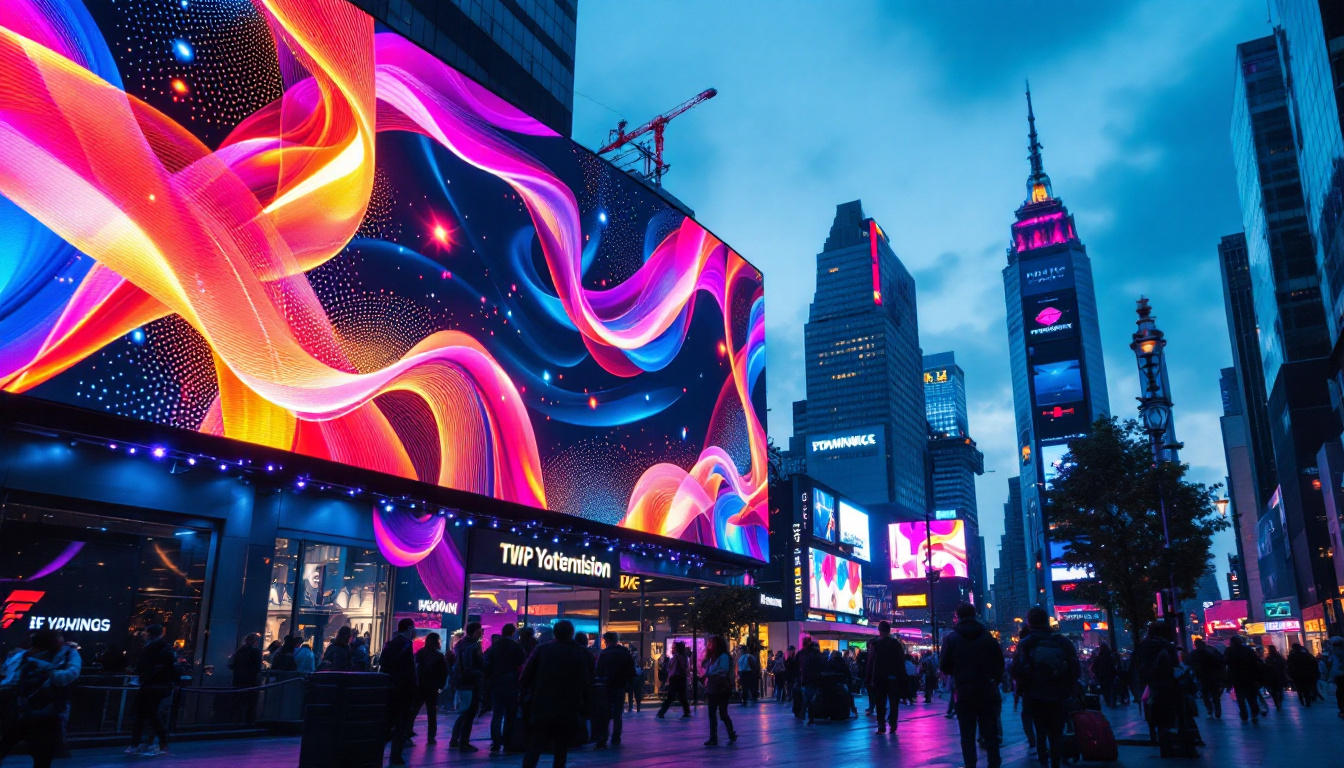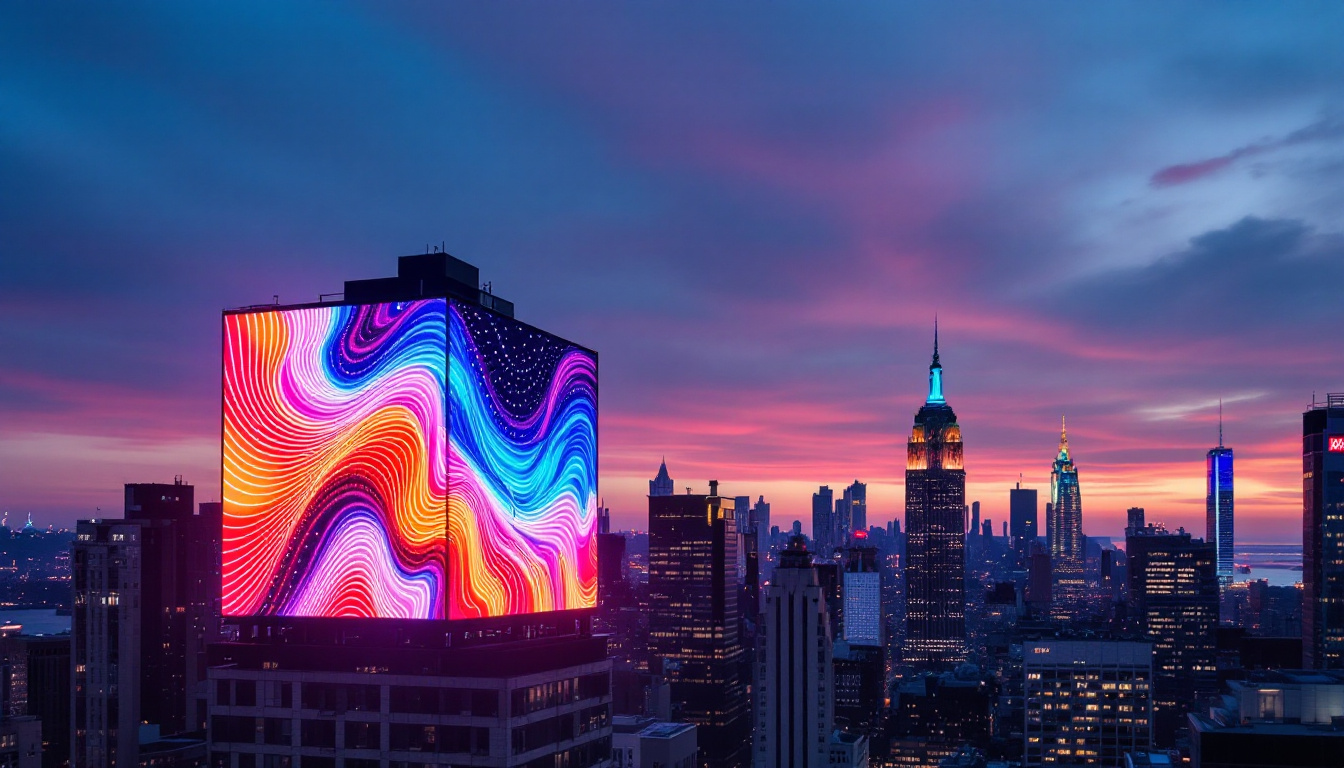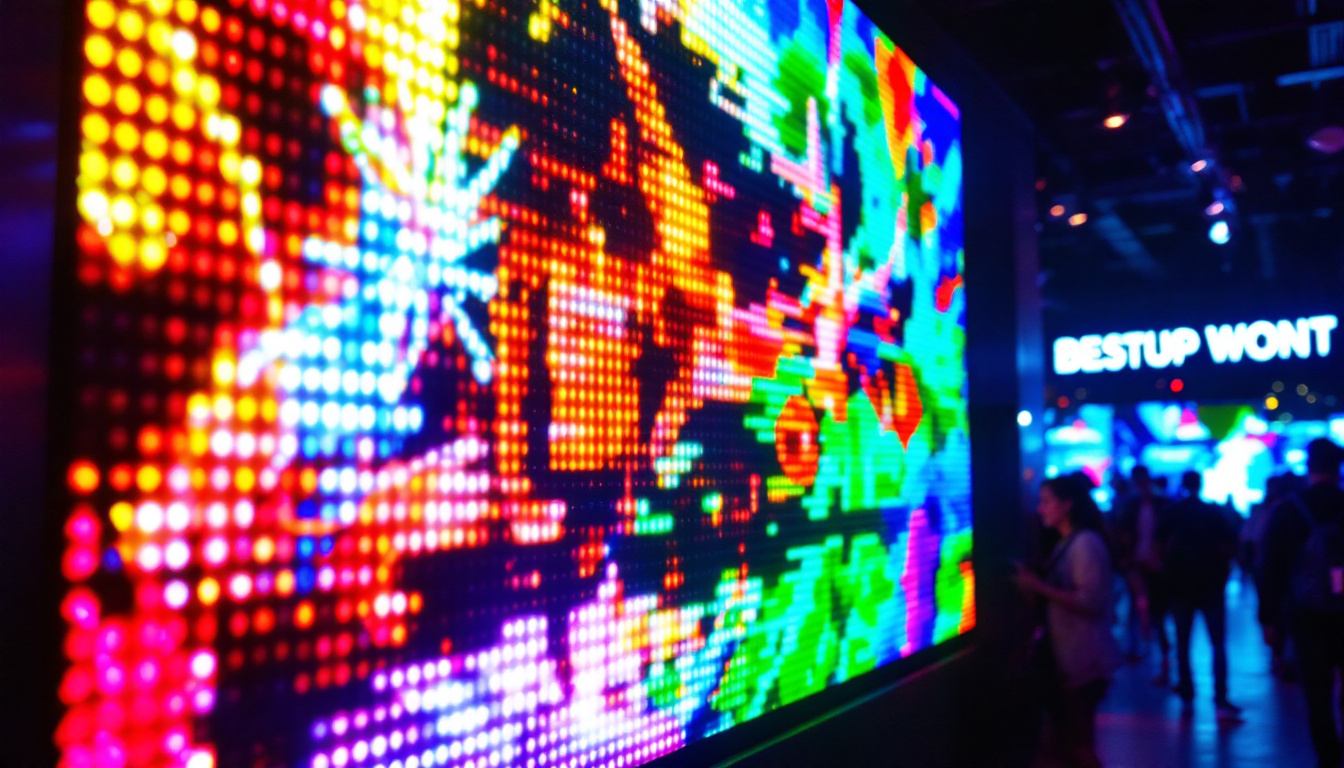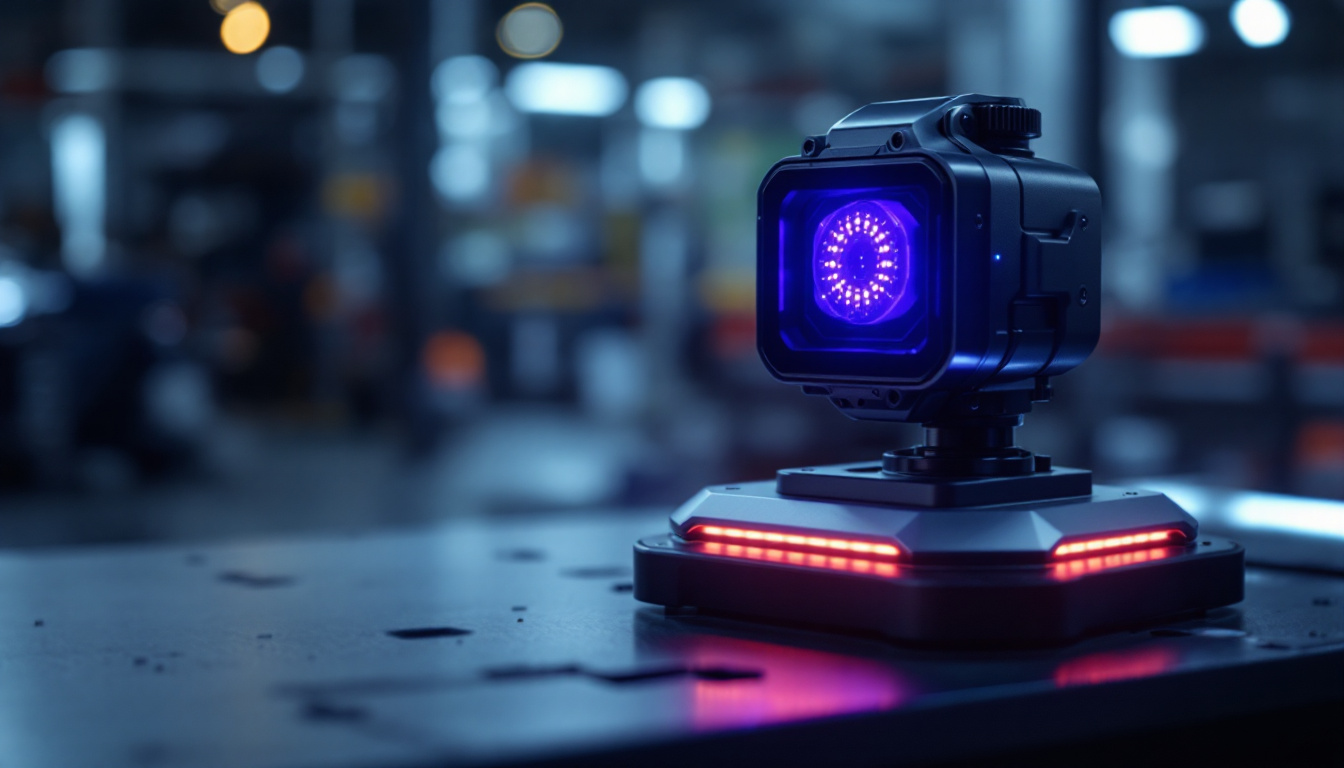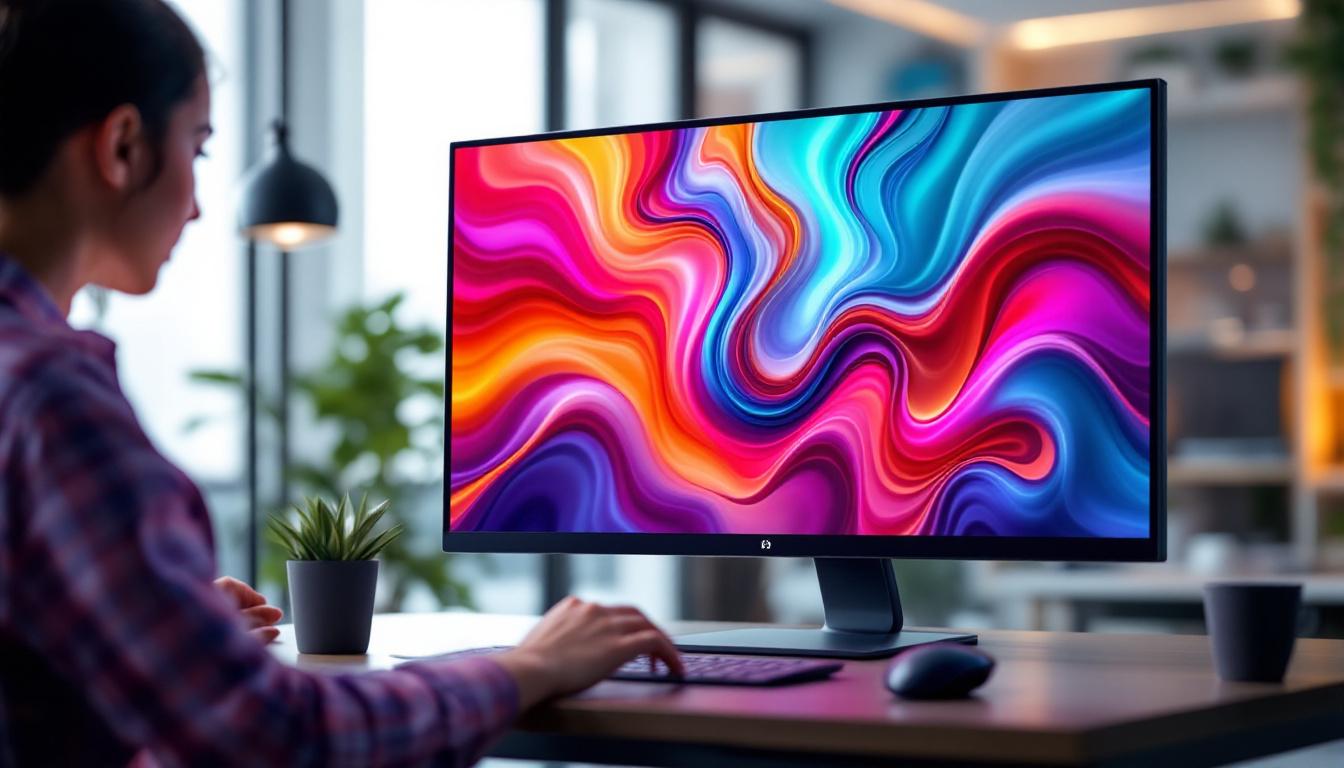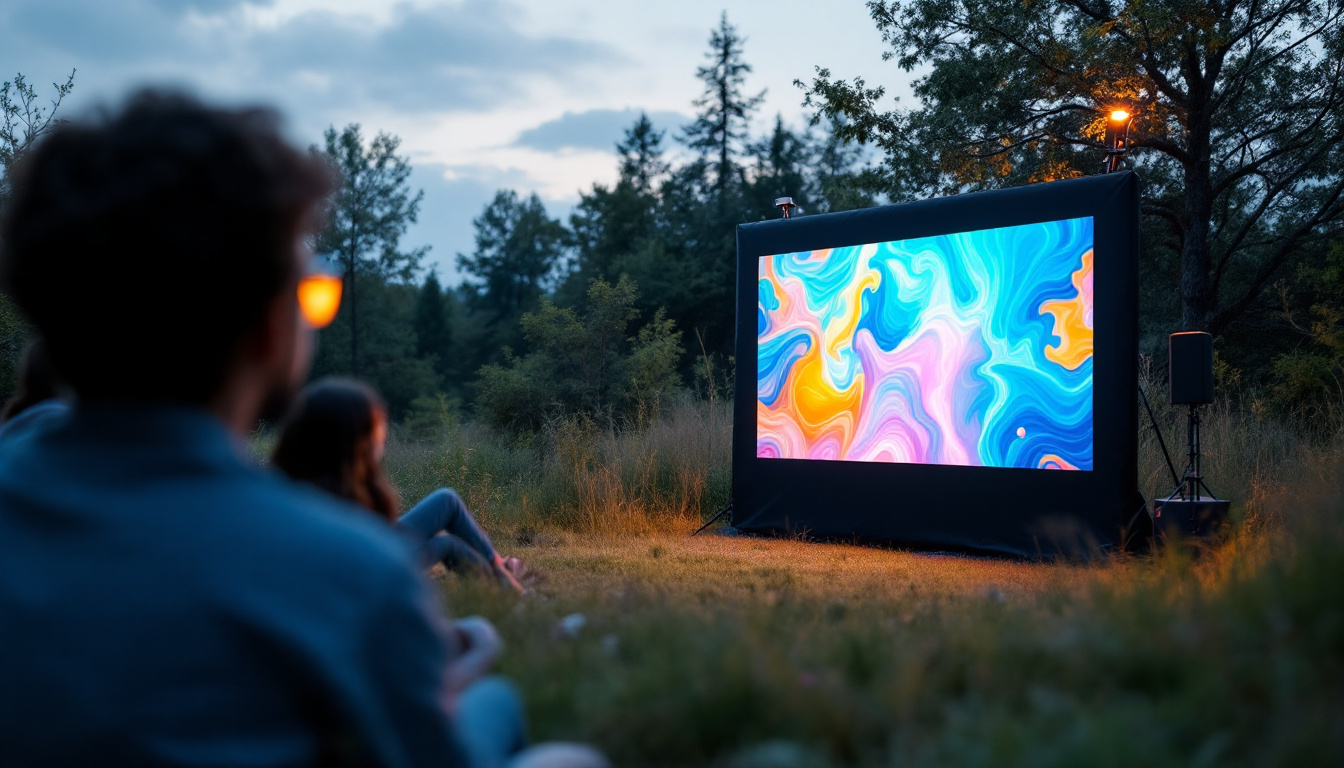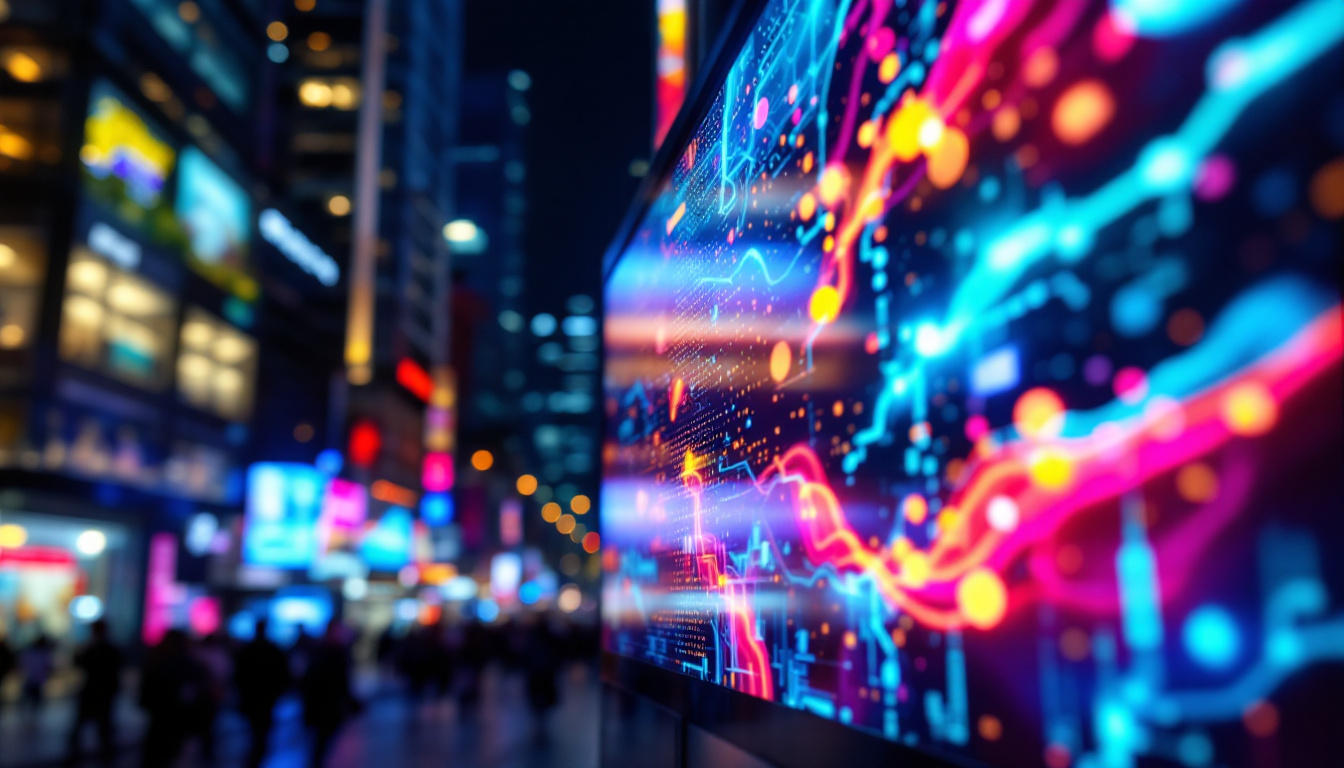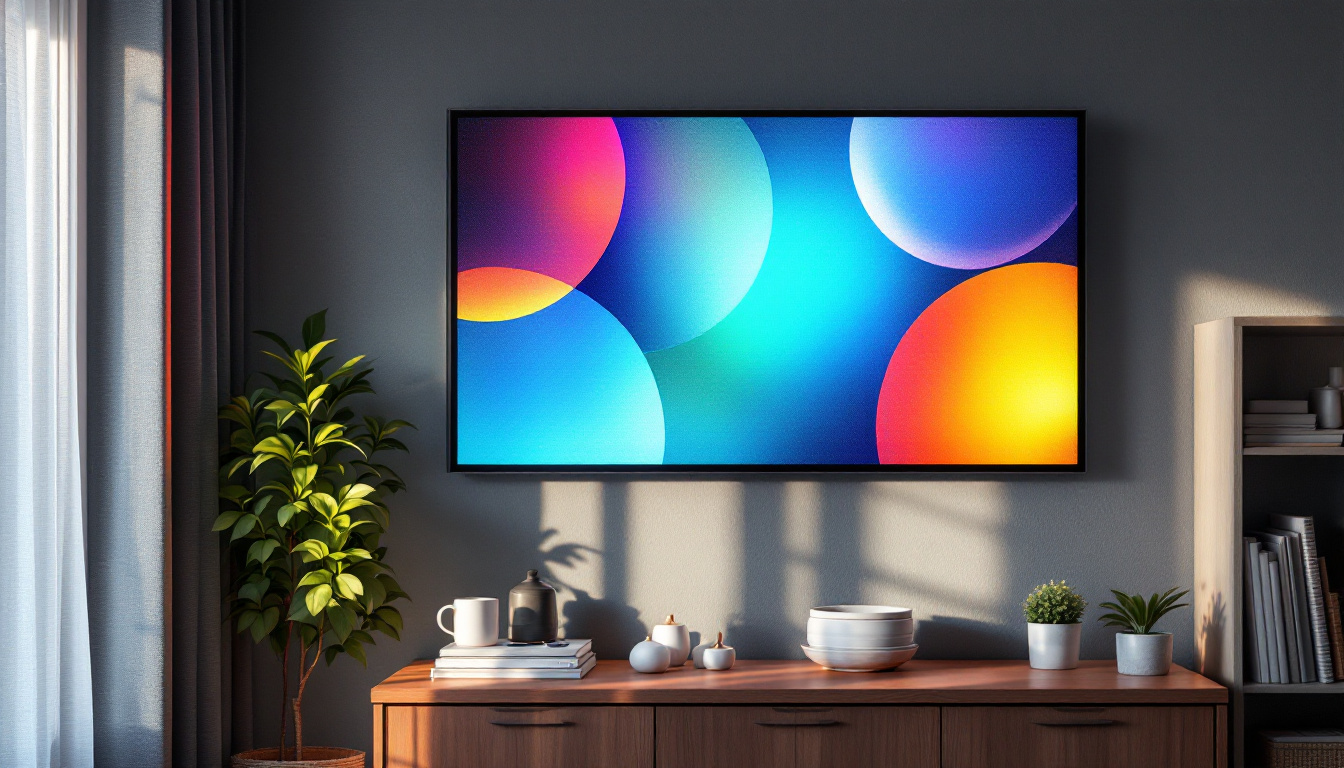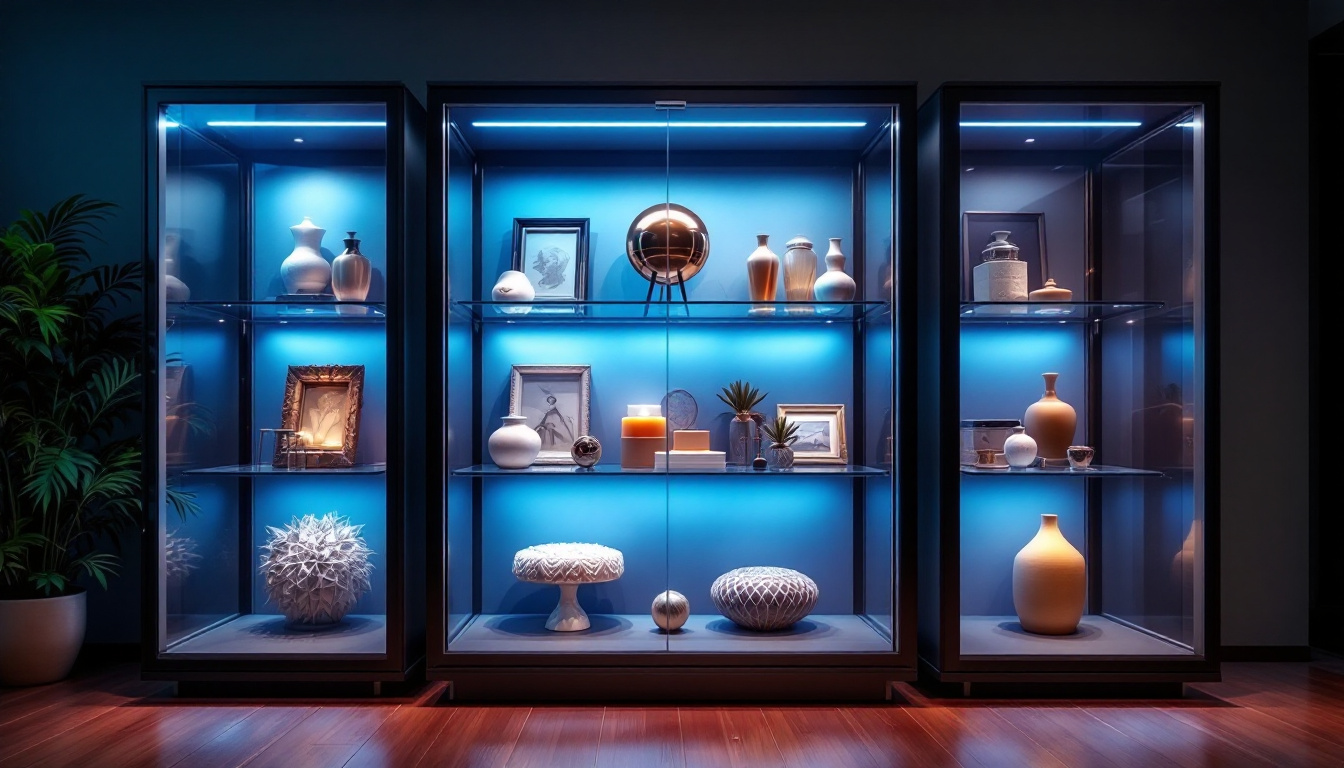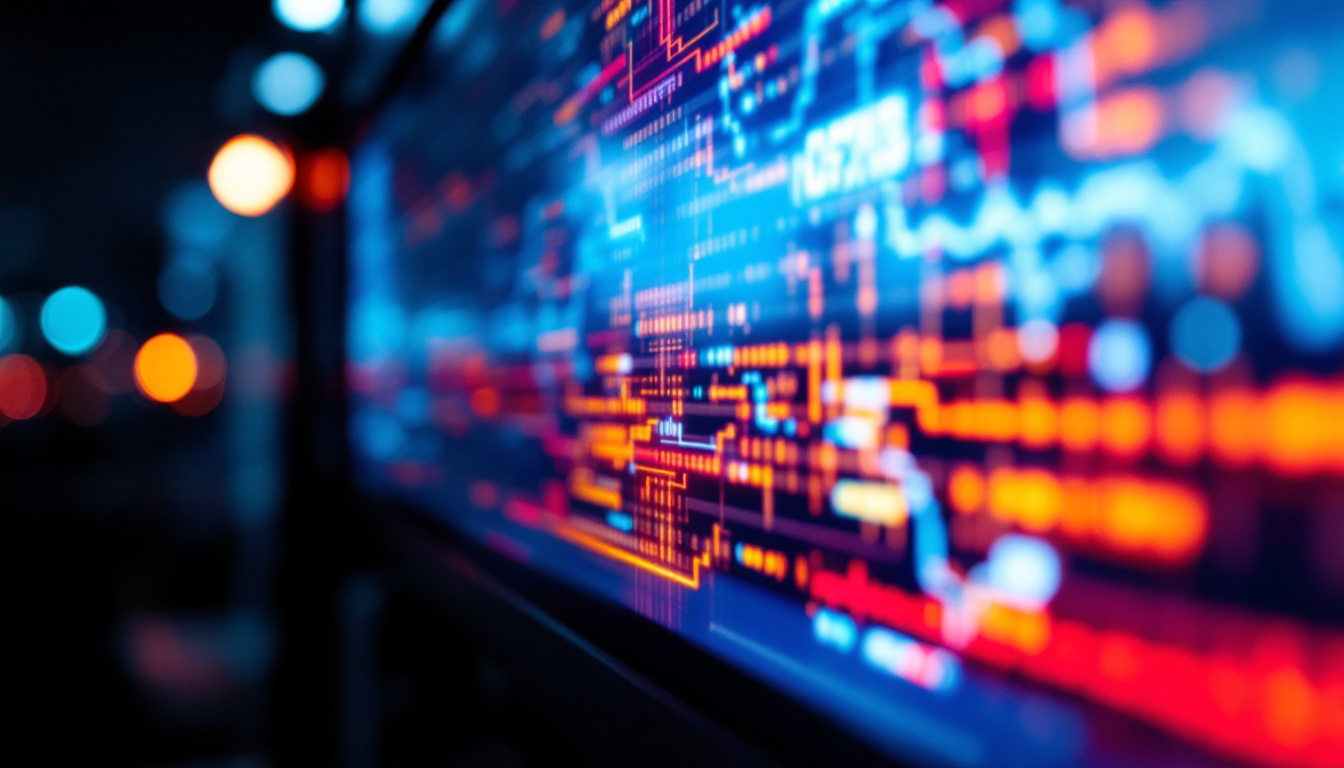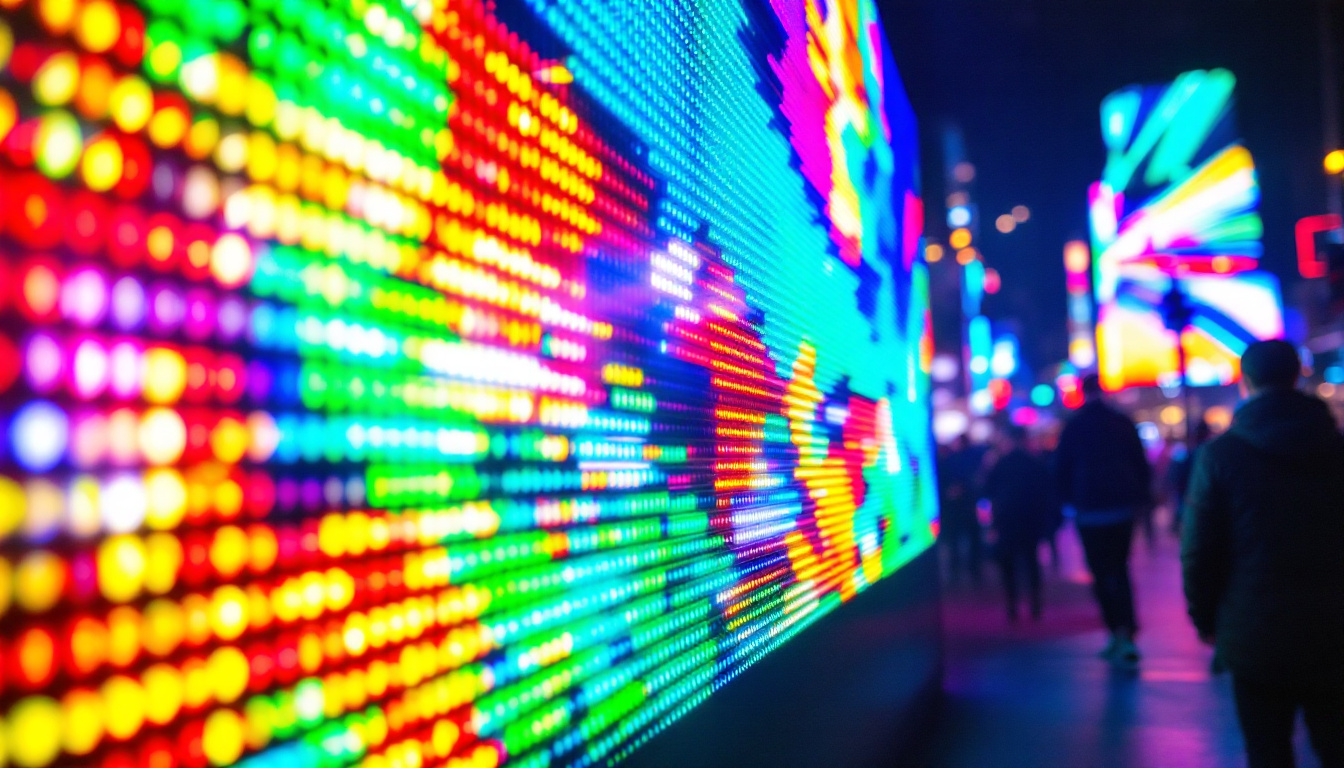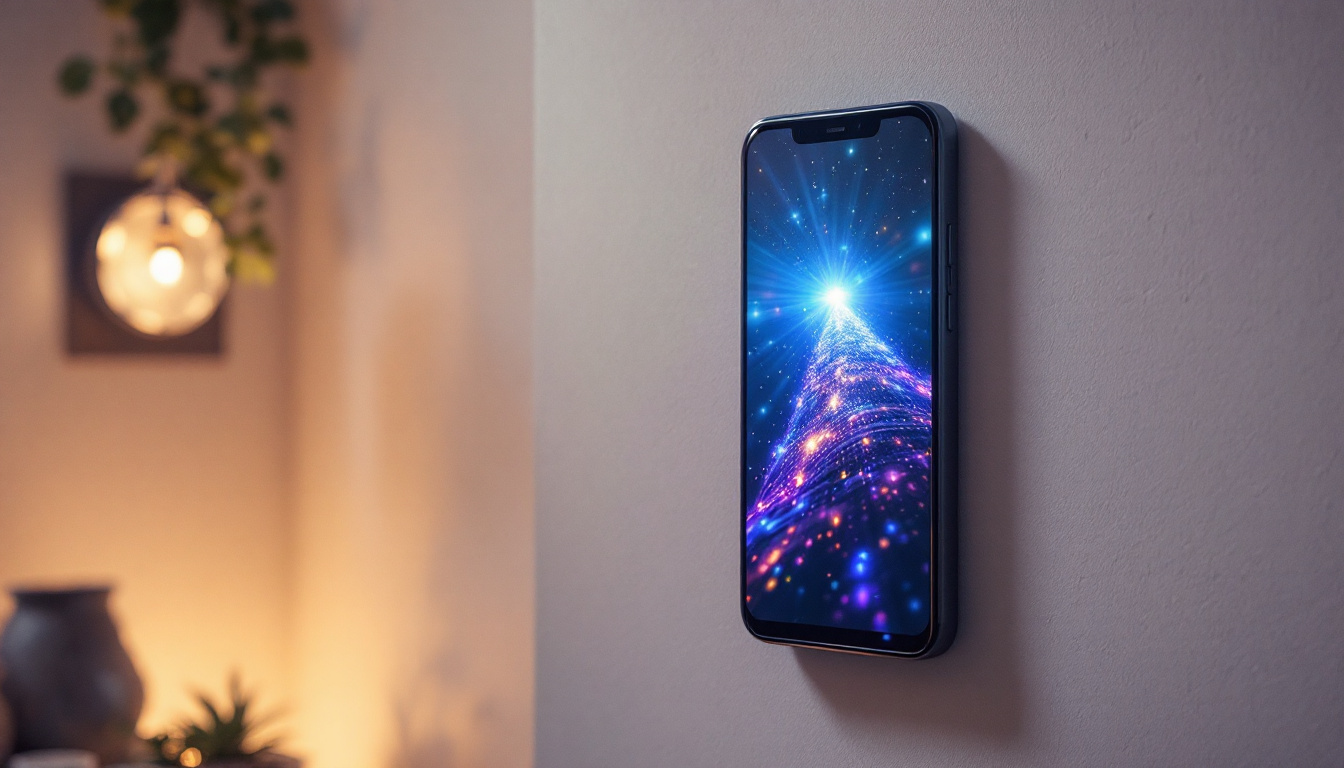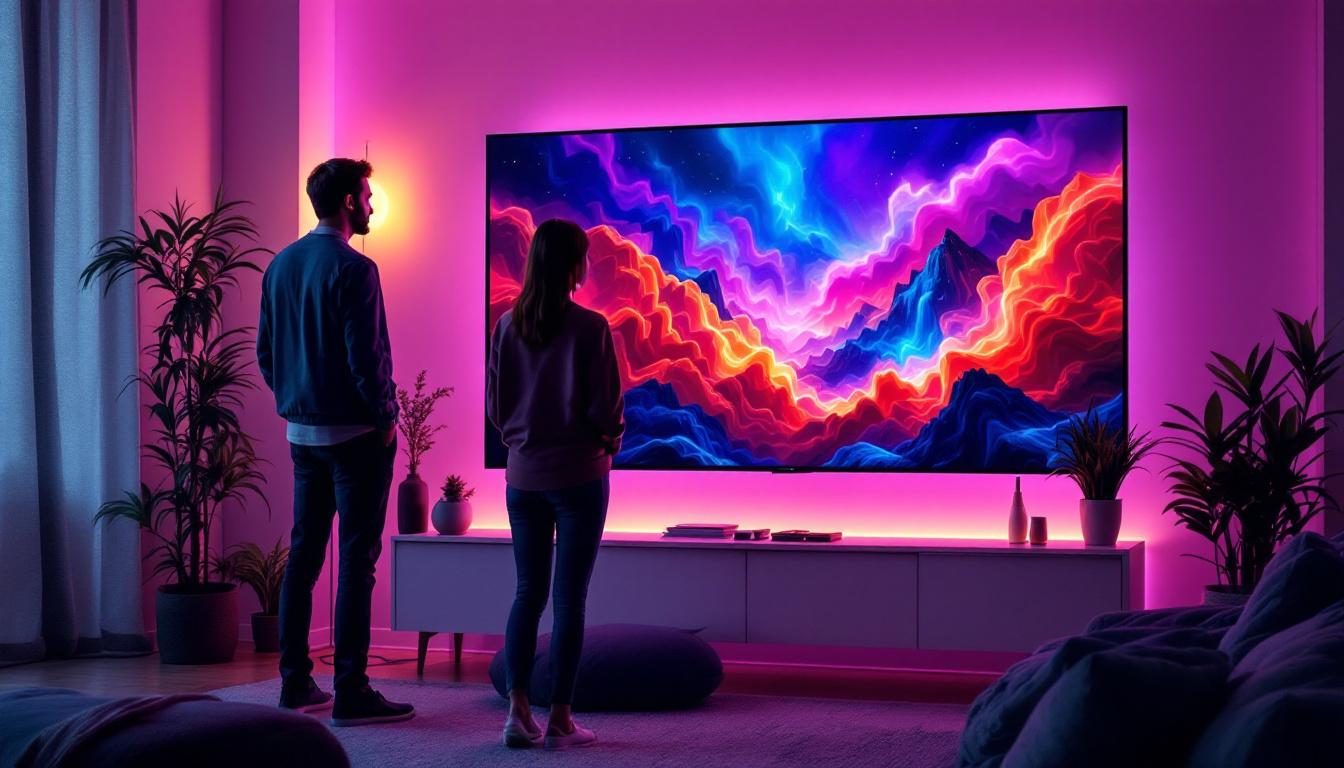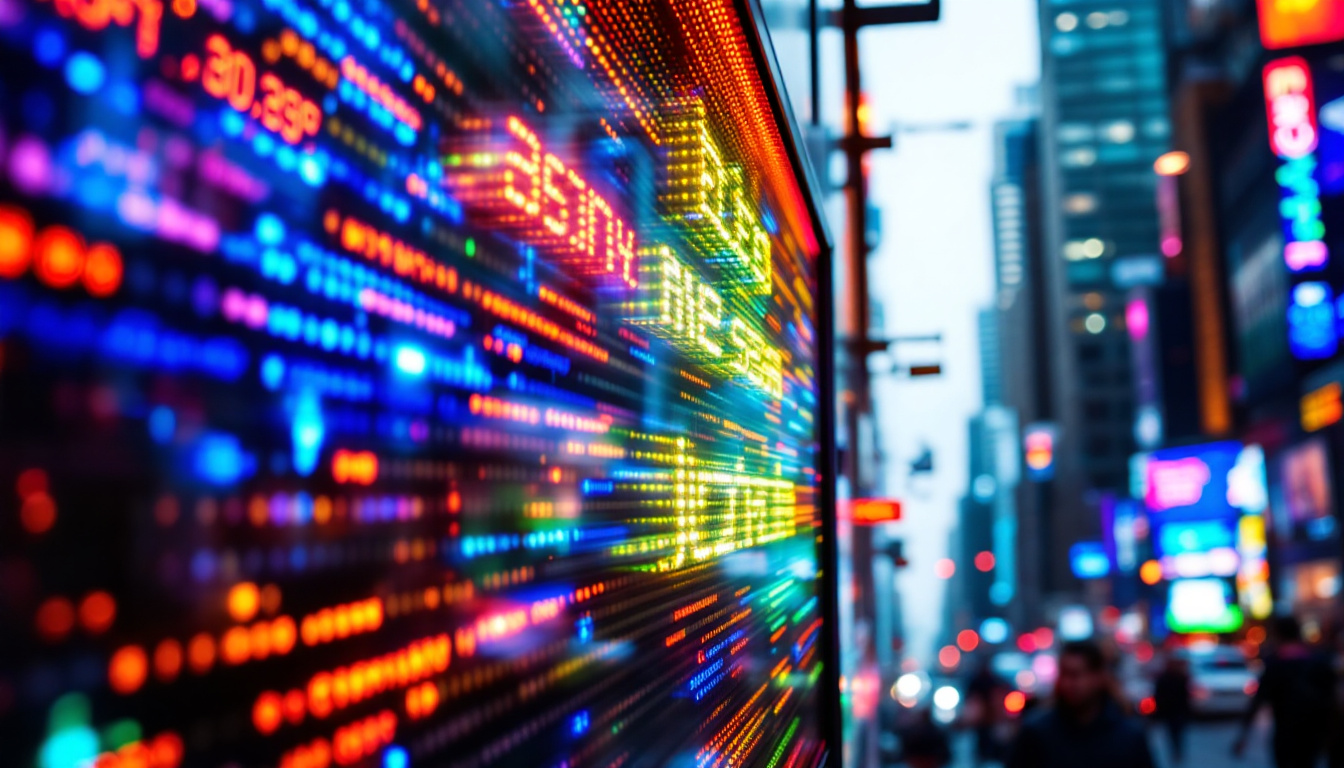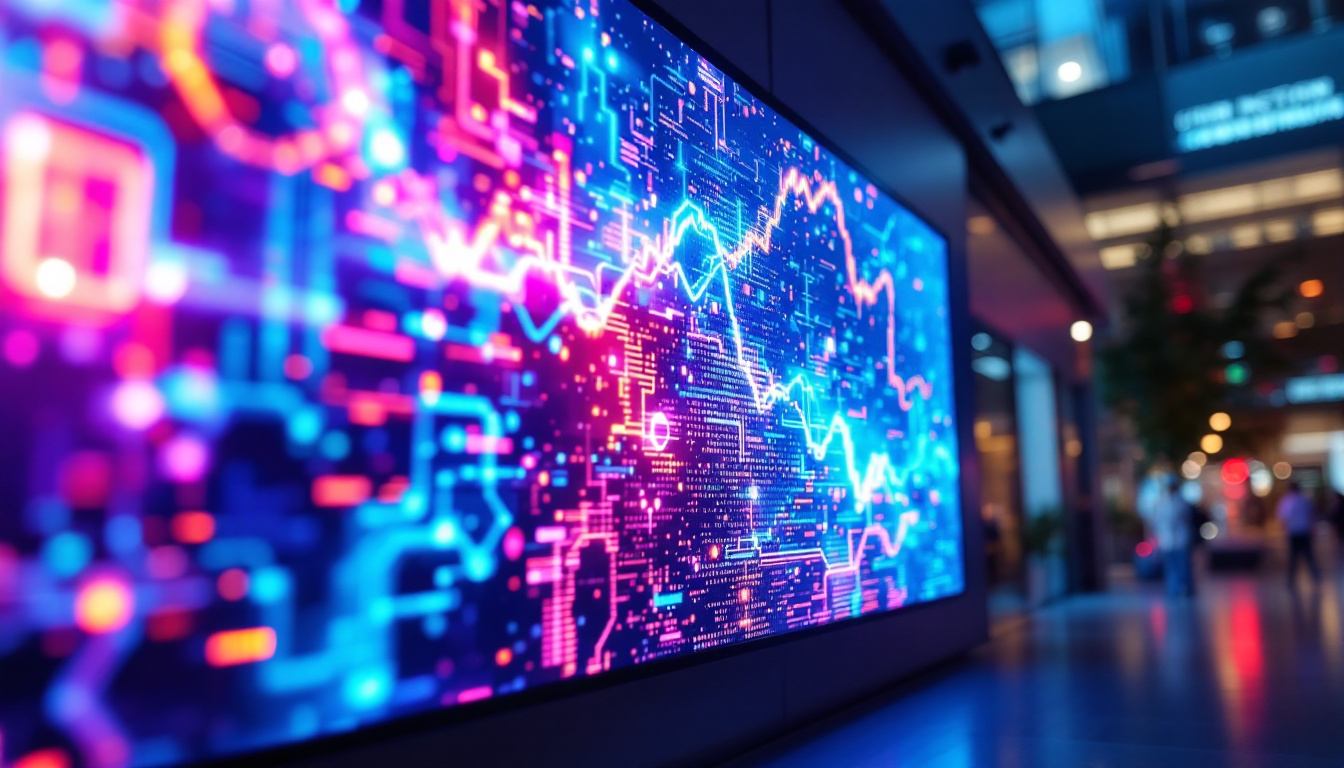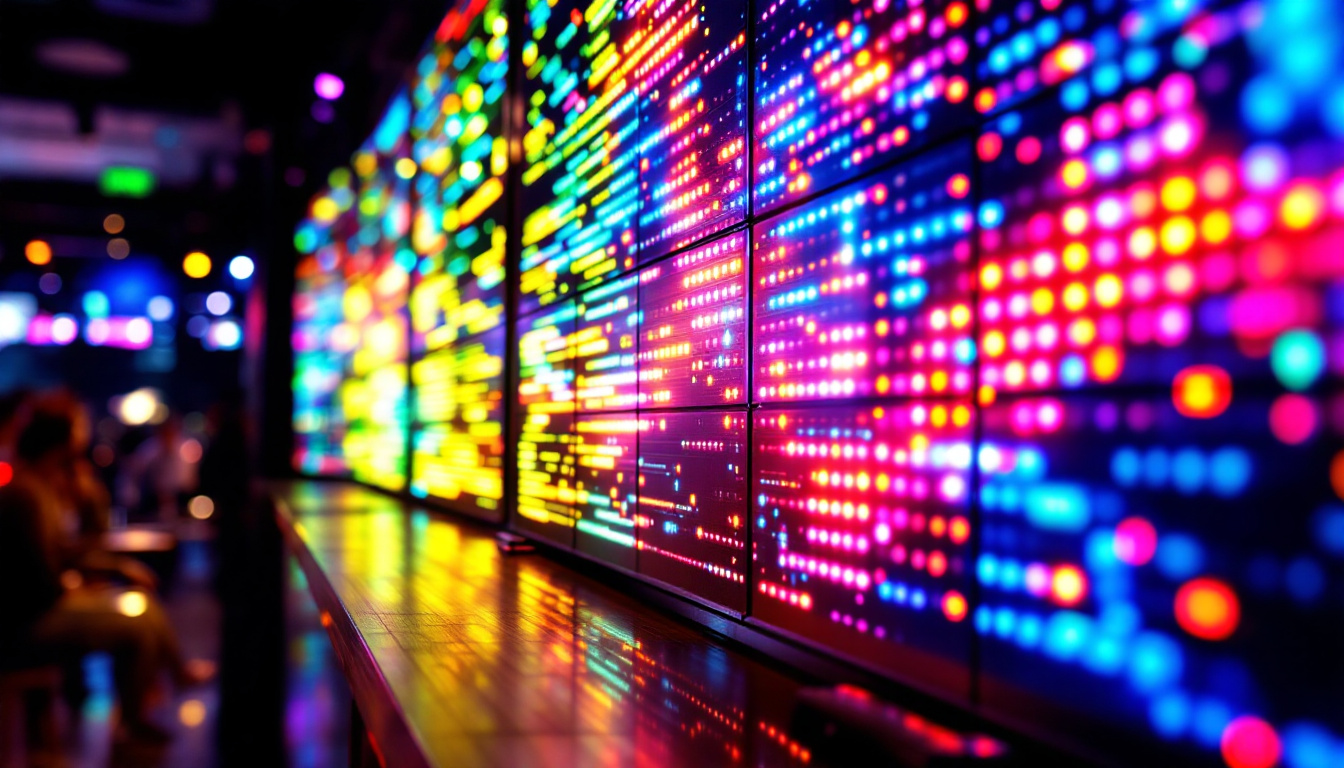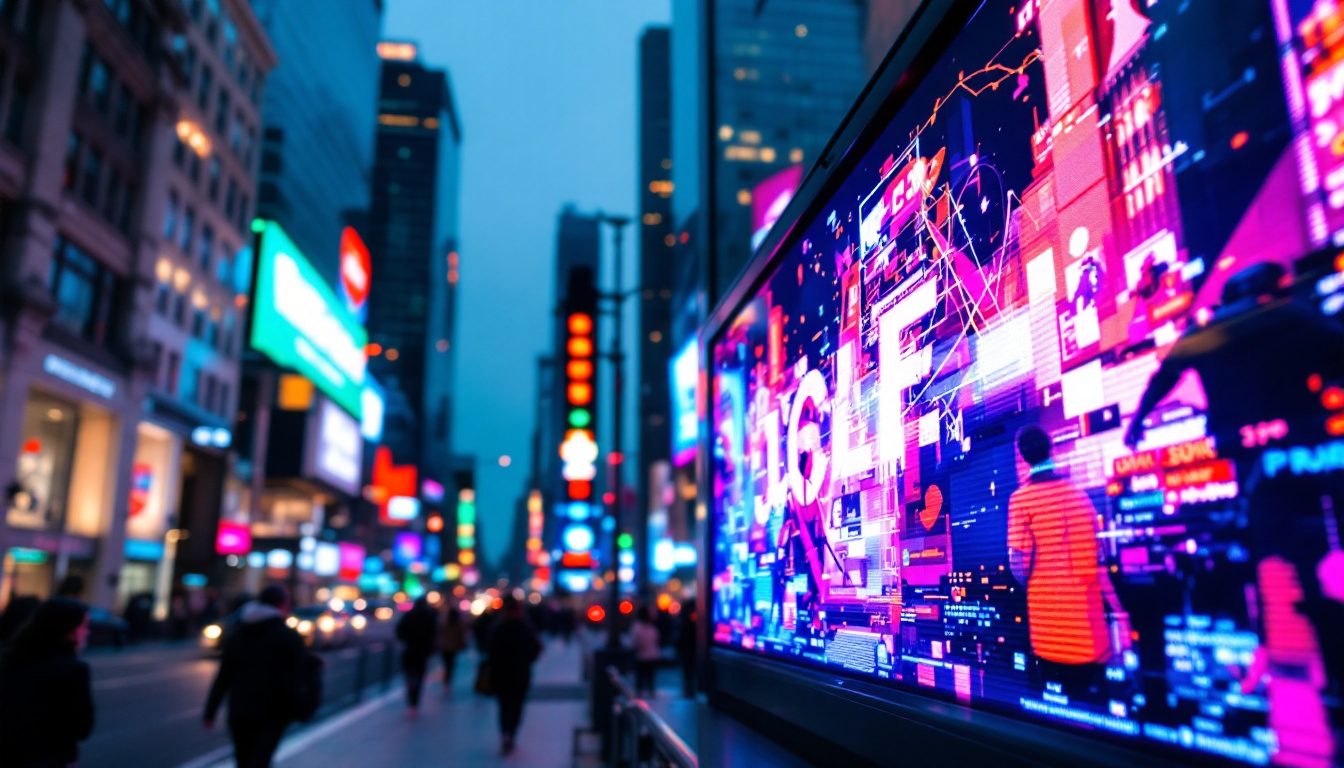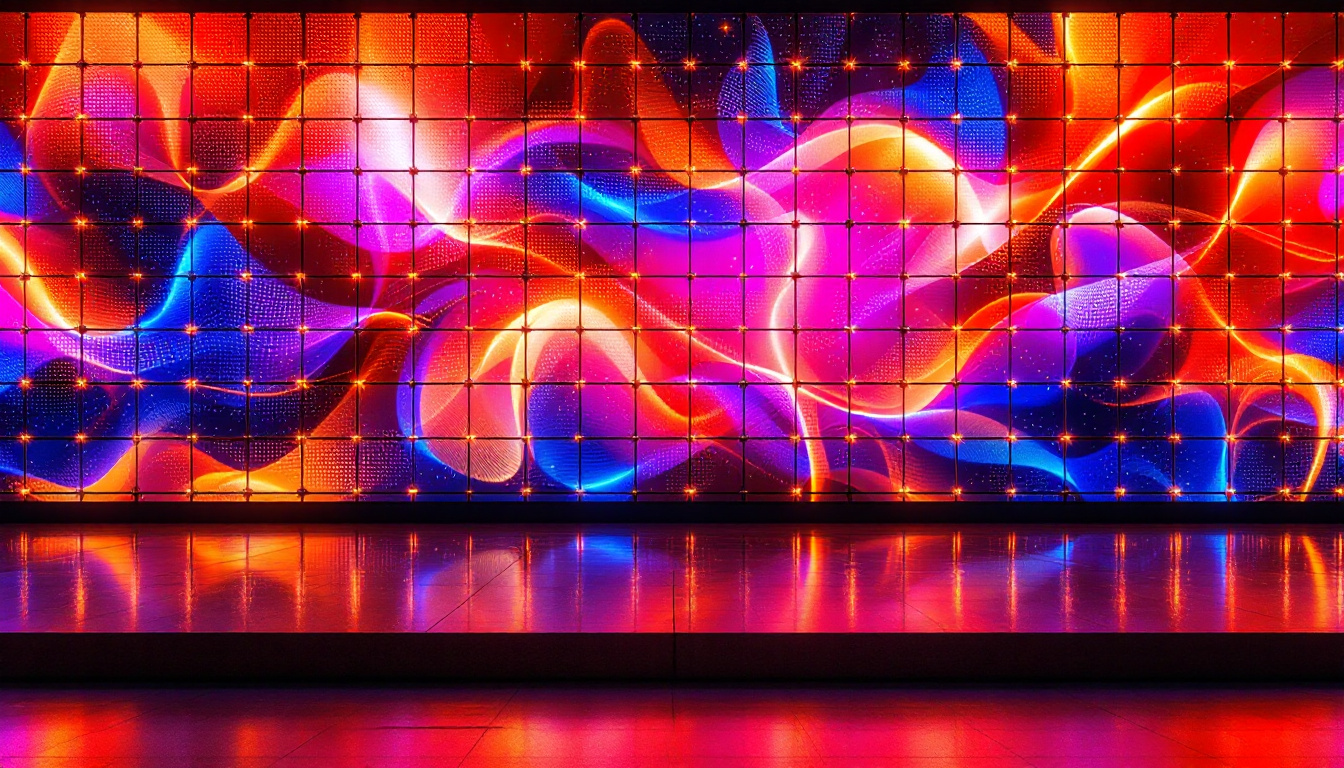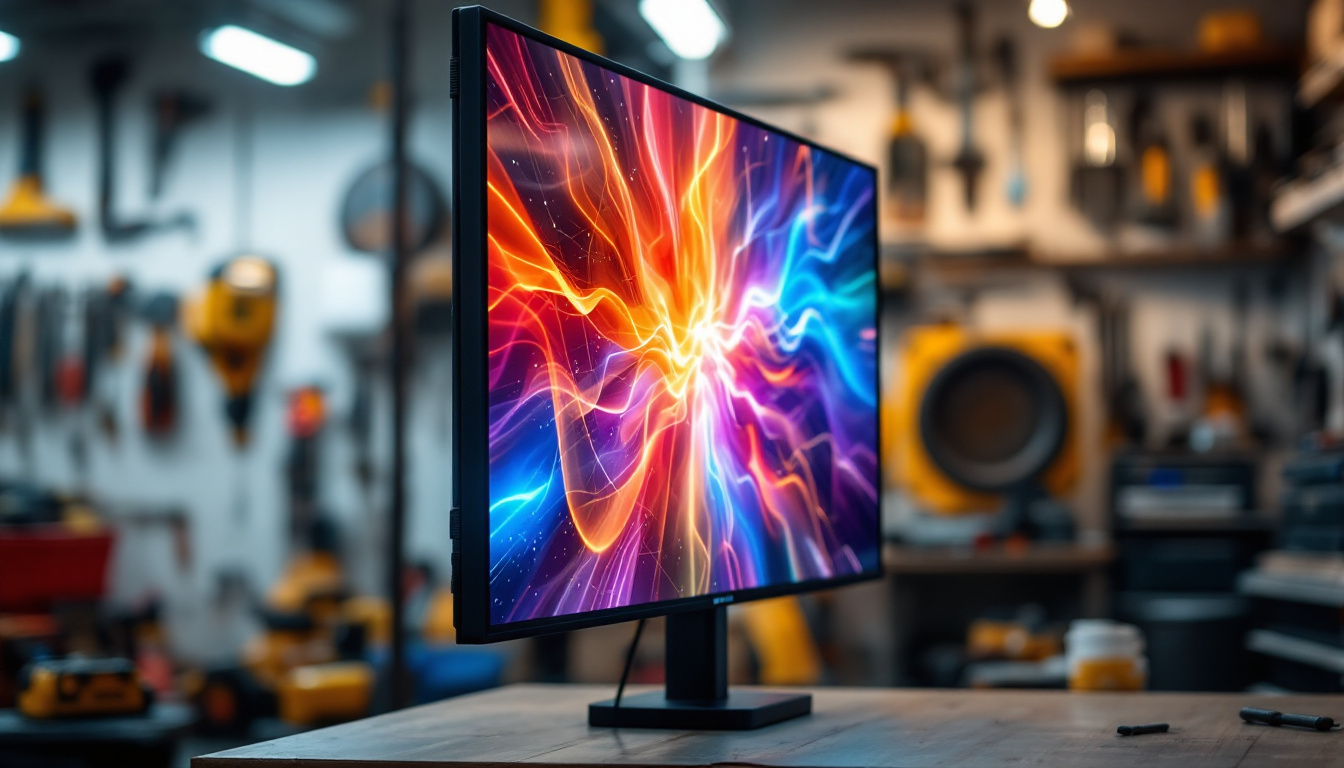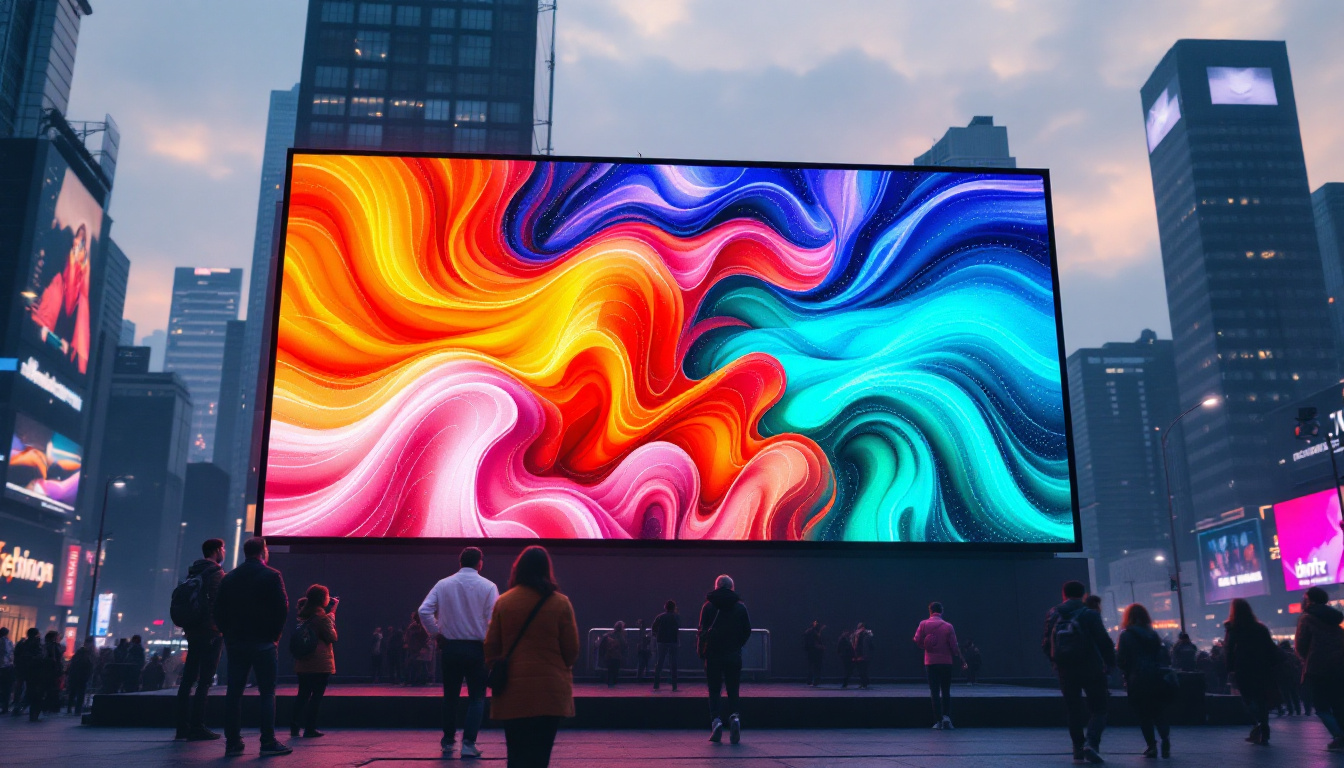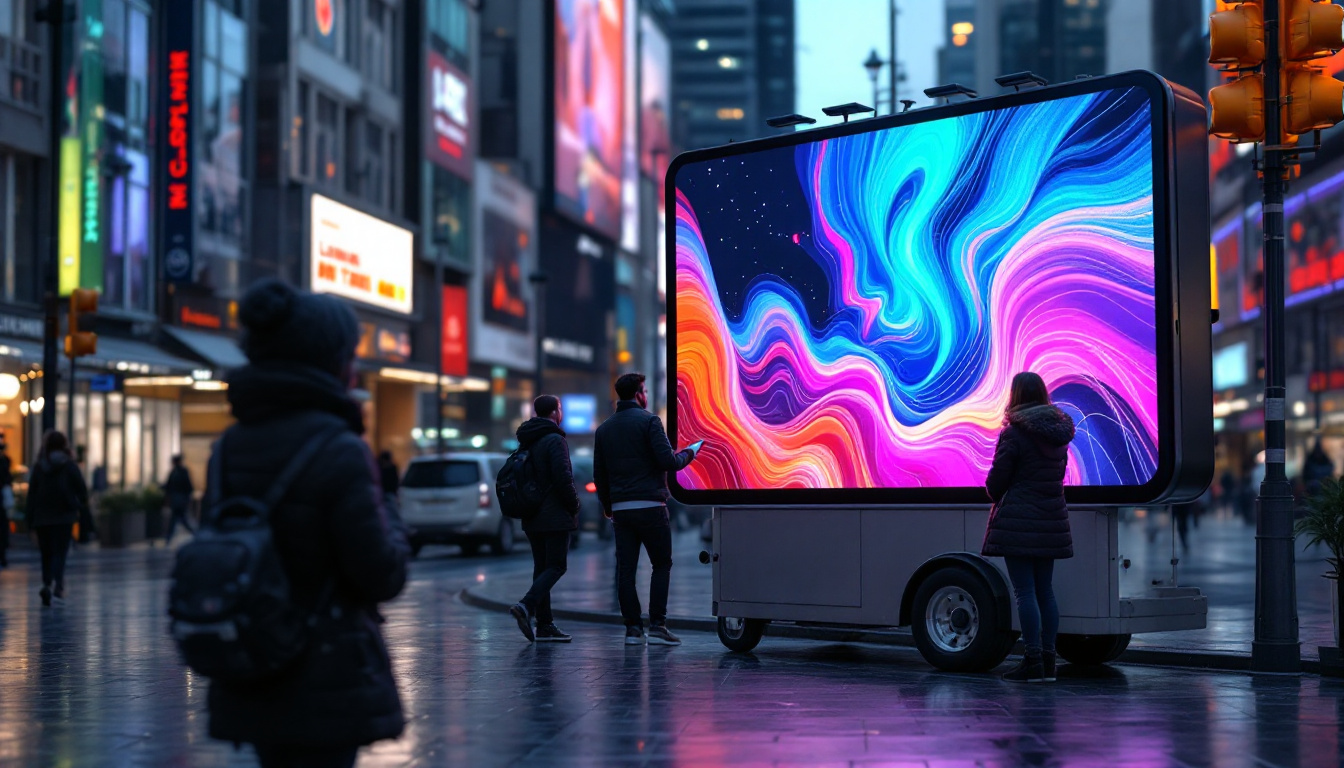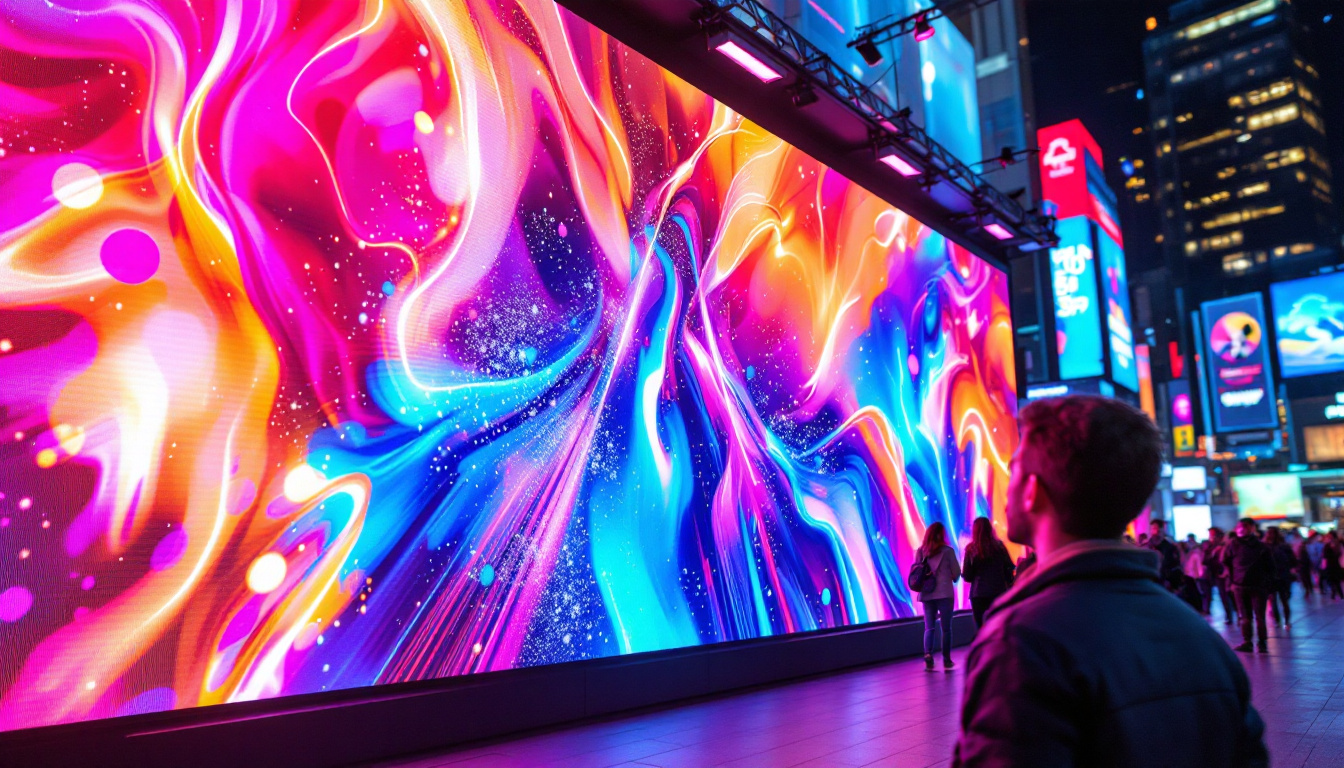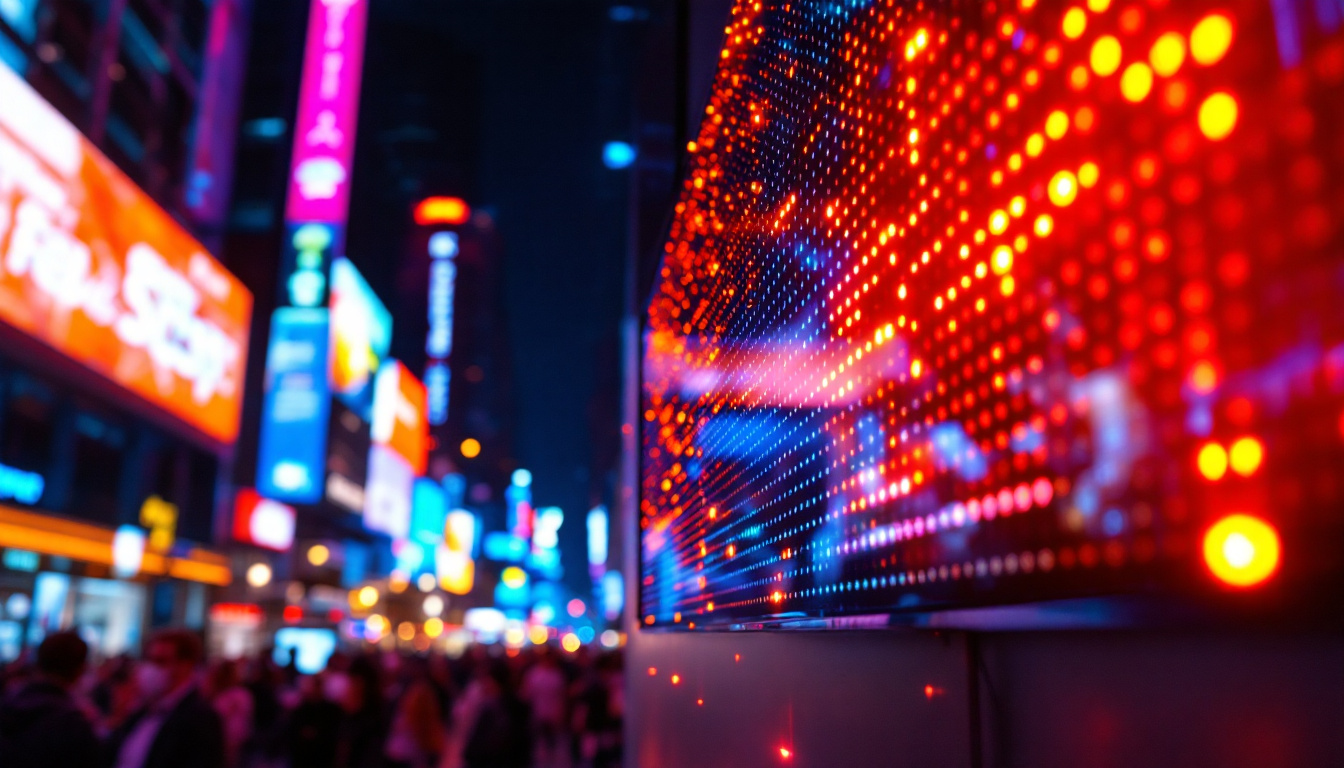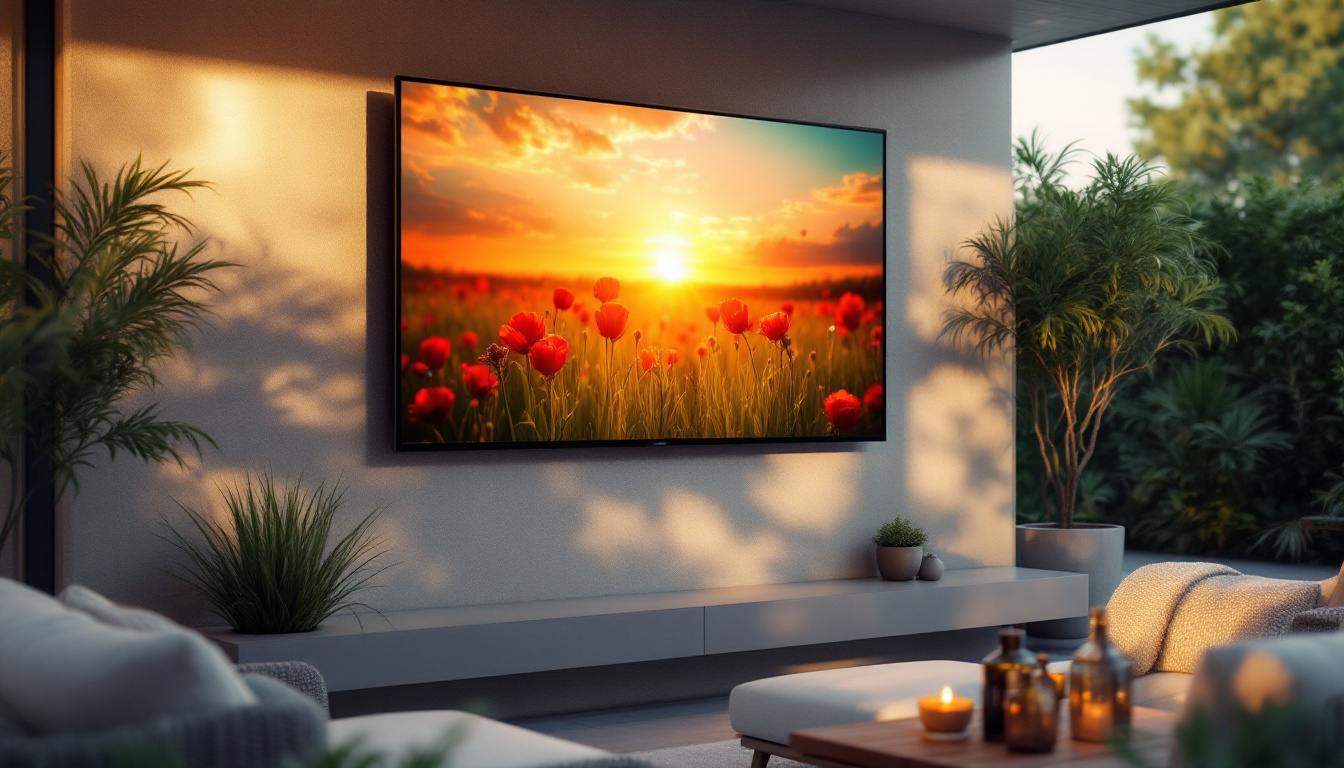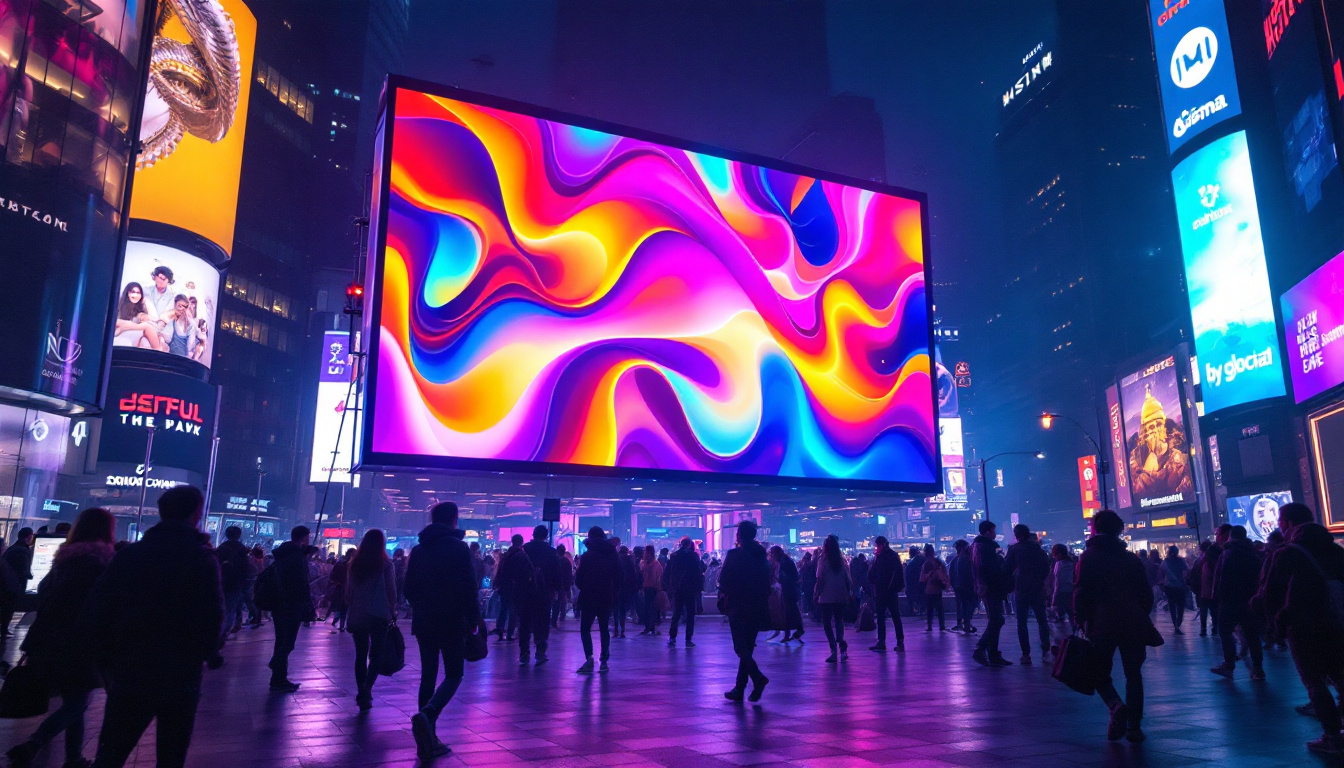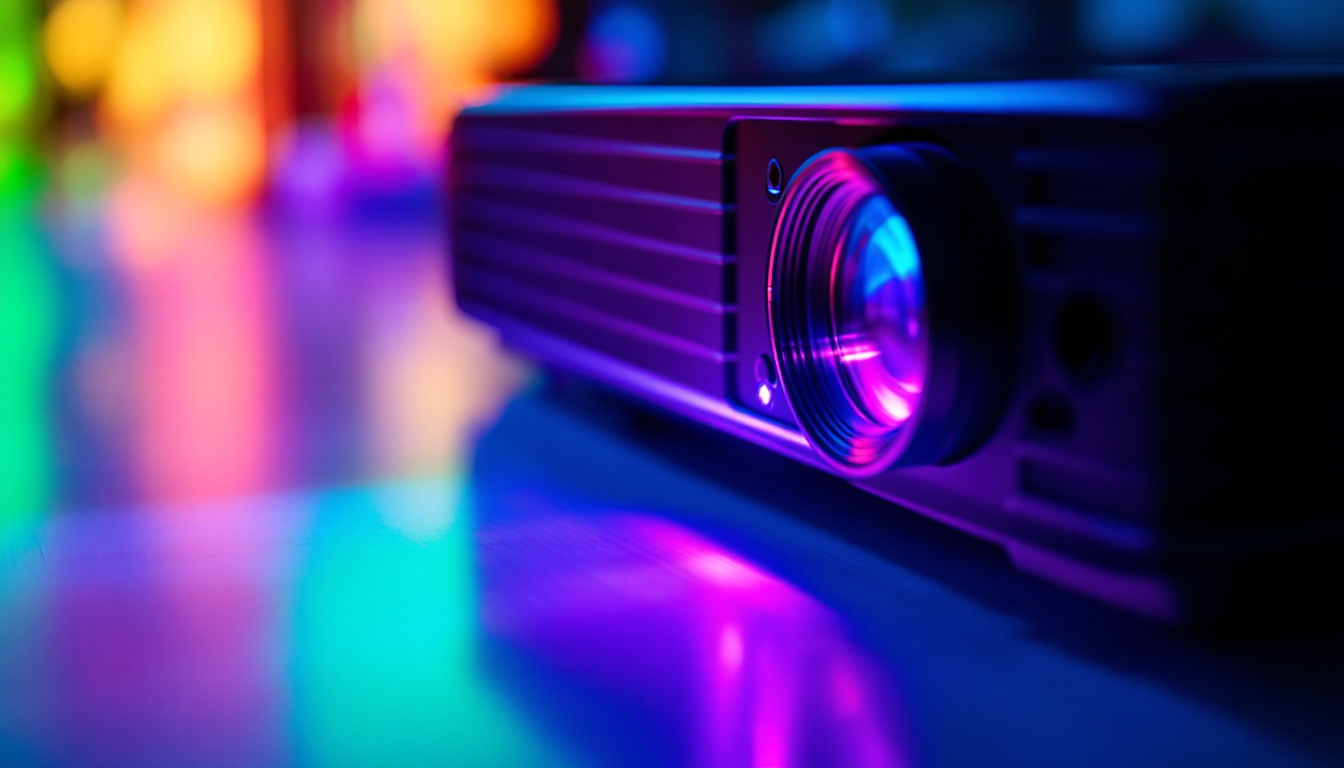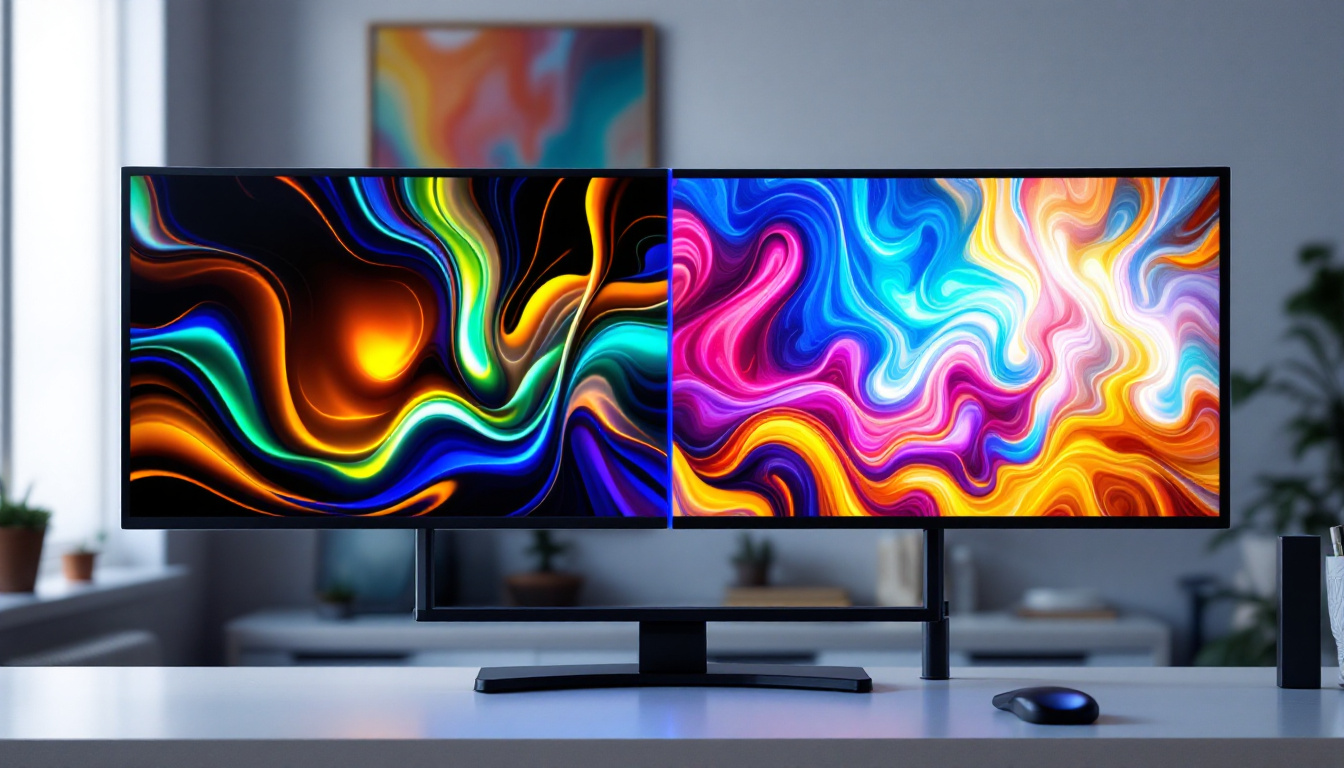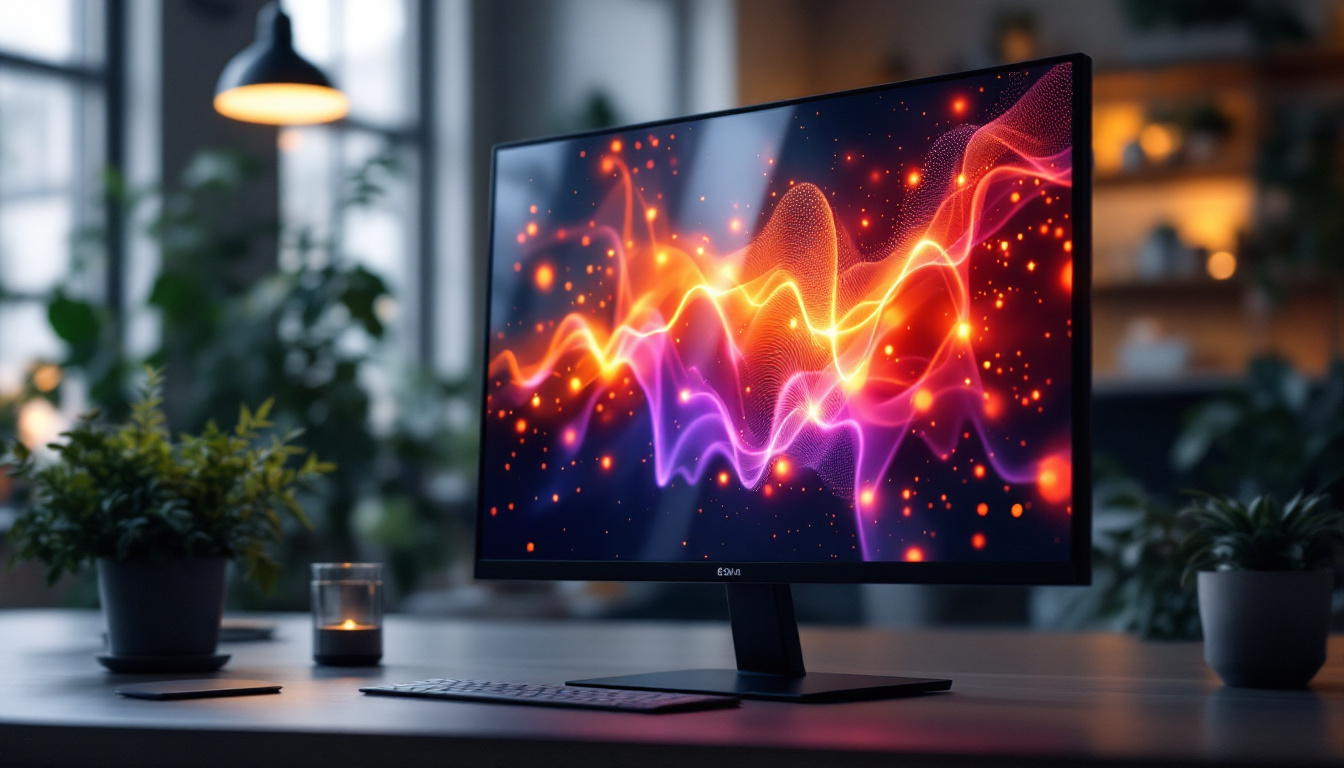In the digital age, LED display screens have become a ubiquitous part of modern life, transforming how information is conveyed in various settings. From bustling cityscapes adorned with massive advertising screens to intimate venues showcasing vibrant visuals, LED technology has revolutionized the way we interact with media. This article delves into the intricacies of LED display screens, particularly focusing on the advancements and manufacturing prowess in China, a global leader in this field.
Understanding LED Display Technology
LED stands for Light Emitting Diode, a semiconductor device that emits light when an electric current passes through it. LED displays utilize thousands of these tiny diodes to create images and videos, offering a range of benefits over traditional display technologies. The fundamental principle behind LED displays is their ability to produce bright and vibrant colors, making them ideal for various applications. In addition to their visual appeal, LED displays are energy-efficient, consuming significantly less power than older technologies like LCD and plasma screens. This efficiency not only reduces operational costs but also contributes to a smaller carbon footprint, making LED displays a more environmentally friendly choice.
Types of LED Displays
LED displays can be categorized into several types, each serving different purposes. The most common types include:
- Indoor LED Displays: These are designed for use in enclosed spaces, such as shopping malls, conference rooms, and theaters. They typically have a higher pixel density, resulting in sharper images viewed from close distances. Indoor displays often feature advanced technologies like high refresh rates and wide color gamuts, enhancing the viewing experience for audiences in settings where clarity and detail are paramount.
- Outdoor LED Displays: Built to withstand various weather conditions, outdoor LED displays are used for billboards, stadiums, and public events. They are brighter than indoor displays to combat sunlight and have a lower pixel density. These displays are often equipped with protective coatings and robust casings to ensure durability against rain, wind, and extreme temperatures, making them reliable for long-term use in public spaces.
- Transparent LED Displays: These innovative displays allow light to pass through, making them suitable for use in storefronts and exhibitions. They provide a unique visual experience without obstructing the view behind the screen. Transparent LED technology is revolutionizing retail environments, enabling brands to showcase products while simultaneously displaying dynamic advertisements, creating an engaging shopping experience.
How LED Displays Work
LED displays work by combining red, green, and blue (RGB) diodes to create a full spectrum of colors. Each pixel on the screen is made up of these three colored diodes, which can be adjusted in intensity to produce various hues. The display is controlled by a driver circuit that regulates the current flowing through each diode, allowing for precise control over brightness and color. This technology not only allows for vivid images but also enables features like dynamic color adjustment and real-time content updates, making LED displays highly versatile for different applications.
The resolution of an LED display is determined by the pixel pitch, which refers to the distance between the centers of two adjacent pixels. A smaller pixel pitch results in higher resolution, enabling the display to produce finer details and sharper images. Additionally, advancements in LED technology have led to the development of fine-pitch displays, which are increasingly being used in high-end applications such as control rooms and broadcast studios, where image clarity is critical. As the technology continues to evolve, we can expect even more innovative uses for LED displays, including interactive surfaces and integration with augmented reality, further enhancing the way we engage with visual content.
The Rise of LED Display Manufacturing in China
China has emerged as a powerhouse in LED display manufacturing, dominating the global market. The country’s rapid industrialization, coupled with significant investments in technology and infrastructure, has positioned it as a leader in producing high-quality LED displays.
Key Factors Contributing to China’s Dominance
Several factors contribute to China’s leadership in the LED display industry:
- Cost-Effective Production: China boasts a vast labor force and advanced manufacturing capabilities, allowing for cost-effective production of LED displays. This enables manufacturers to offer competitive pricing without compromising quality.
- Innovation and Research: Chinese companies invest heavily in research and development, driving innovation in LED technology. This commitment to advancement has led to the creation of cutting-edge products that cater to diverse market needs.
- Robust Supply Chain: The presence of a well-established supply chain in China ensures that manufacturers have easy access to raw materials and components. This efficiency streamlines production processes and reduces lead times.
Leading Manufacturers in China
Numerous companies in China have made significant contributions to the LED display market. Some of the most notable manufacturers include:
- Samsung: While a South Korean company, Samsung has substantial manufacturing operations in China, producing a wide range of LED displays that cater to both consumer and commercial markets.
- Leyard: A prominent player in the LED display industry, Leyard specializes in high-resolution displays and has gained recognition for its innovative solutions in various applications.
- Unilumin: Known for its outdoor LED displays, Unilumin has established itself as a leader in the global market, providing high-quality products for advertising and entertainment.
Applications of LED Displays
LED displays are versatile and can be found in a myriad of applications across different sectors. Their ability to deliver high-quality visuals makes them suitable for various environments.
Advertising and Marketing
One of the most prominent uses of LED displays is in advertising. Billboards and digital signage have transformed how brands communicate with consumers. The bright and dynamic nature of LED displays captures attention, making them an effective medium for marketing campaigns.
Furthermore, the ability to change content in real-time allows advertisers to tailor messages based on audience demographics, time of day, or current events, enhancing engagement and effectiveness.
Entertainment and Events
In the entertainment industry, LED displays play a crucial role in concerts, festivals, and sporting events. Large-scale LED screens are used to broadcast performances and provide immersive experiences for audiences. The vibrant colors and high brightness ensure that visuals remain captivating, even in outdoor settings.
Additionally, LED technology has revolutionized stage design, allowing for dynamic backdrops and interactive elements that enhance the overall production quality.
Transportation and Public Information
LED displays are widely used in transportation systems to provide real-time information to passengers. Airports, train stations, and bus terminals utilize LED screens to display arrival and departure times, gate information, and other essential updates.
Moreover, LED displays are employed in traffic management systems, providing drivers with crucial information such as speed limits, road conditions, and alerts about accidents or hazards.
Benefits of LED Displays
The advantages of LED displays extend beyond their visual appeal. They offer numerous benefits that make them a preferred choice for various applications.
Energy Efficiency
LED displays are known for their energy efficiency compared to traditional display technologies. They consume significantly less power, which not only reduces operational costs but also minimizes environmental impact. This energy efficiency is particularly beneficial for large-scale installations that operate continuously.
Longevity and Durability
Another significant advantage of LED displays is their longevity. LED technology has a longer lifespan than other display types, often lasting over 100,000 hours. This durability translates to lower maintenance costs and less frequent replacements, making LED displays a cost-effective investment in the long run.
High Brightness and Contrast
LED displays are capable of achieving high brightness levels, ensuring visibility even in direct sunlight. This characteristic makes them ideal for outdoor applications where traditional displays may struggle. Additionally, the contrast ratios of LED displays allow for deeper blacks and more vibrant colors, enhancing the overall viewing experience.
Challenges Facing the LED Display Industry
Despite the numerous advantages, the LED display industry faces several challenges that manufacturers and consumers must navigate.
Market Saturation
As the demand for LED displays continues to grow, the market has become increasingly saturated. This saturation leads to intense competition among manufacturers, which can drive prices down and impact profit margins. Companies must continually innovate and differentiate their products to remain competitive.
Environmental Concerns
While LED displays are more energy-efficient than traditional displays, the production and disposal of electronic components raise environmental concerns. The industry must address these issues by adopting sustainable manufacturing practices and developing recycling programs to minimize waste.
Technological Advancements
The rapid pace of technological advancements poses a challenge for manufacturers to keep up with evolving consumer preferences and industry standards. Companies must invest in research and development to stay ahead of trends and deliver cutting-edge products that meet market demands.
The Future of LED Displays
The future of LED displays looks promising, with continuous advancements in technology and applications. Emerging trends such as flexible displays, interactive screens, and integration with augmented reality (AR) and virtual reality (VR) are set to redefine how LED displays are used.
Flexible and Curved Displays
Flexible LED displays are gaining traction, allowing for innovative designs that can be adapted to various surfaces and shapes. This flexibility opens up new possibilities for advertising, architecture, and interior design, enabling creative applications that were previously unattainable.
Integration with Smart Technology
As smart technology becomes more prevalent, the integration of LED displays with IoT (Internet of Things) devices is on the rise. This integration allows for real-time data sharing and interaction, enhancing user experiences and creating more dynamic environments.
Augmented and Virtual Reality
The convergence of LED displays with AR and VR technologies is poised to create immersive experiences in entertainment, education, and training. As these technologies evolve, LED displays will play a crucial role in delivering high-quality visuals that enhance the overall experience.
Conclusion
LED display screens have transformed the way information is communicated and experienced in various settings. With China’s dominance in manufacturing and innovation, the industry is poised for continued growth and evolution. As technology advances, LED displays will become even more integral to our daily lives, offering new opportunities for creativity and engagement. Understanding the intricacies of LED display technology and its applications is essential for businesses and consumers alike, paving the way for a brighter, more visually engaging future.
Explore Cutting-Edge LED Displays with LumenMatrix
As we embrace the future of LED display technology, LumenMatrix stands at the forefront, offering a diverse range of innovative solutions to meet your visual communication needs. Whether you’re looking to enhance brand visibility with an Indoor LED Wall Display, captivate passersby with an Outdoor LED Wall Display, or create immersive experiences with Custom LED Displays and LED Transparent Displays, LumenMatrix has the expertise to bring your vision to life. Discover how our state-of-the-art LED display modules can transform your space and engage your audience. Check out LumenMatrix LED Display Solutions and join the revolution in visual storytelling.

